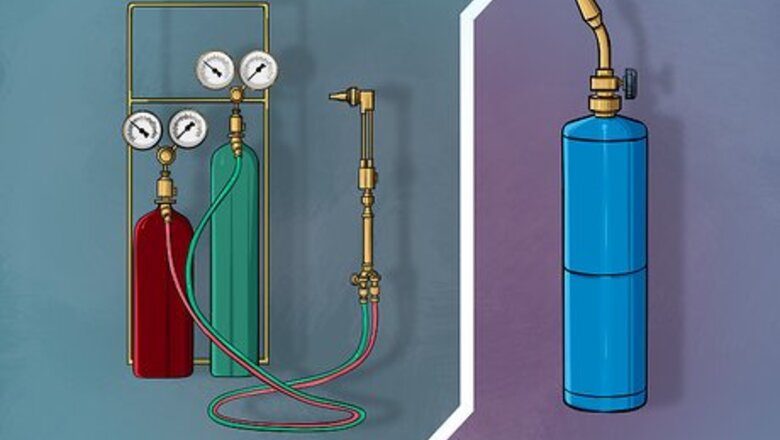
views
Operating a Propane Torch
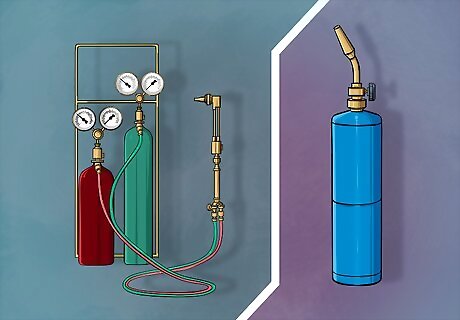
Choose the right propane torch for your needs. Most propane torches consist of a small gas tank fitted with a regulator, with or without an electric igniter. If yours doesn't have an igniter, you'll need to use a striker to light the torch. If you need low heat, opt for a propane torch with a flame-spreading tip, which will allow you to diffuse the flame to lower its heat. When using a high heat for repairing chain-link fences and the like, consider using an oxygen-fuel torch. These torches have 2 separate tanks for gas (usually propane or MAPP) and oxygen.
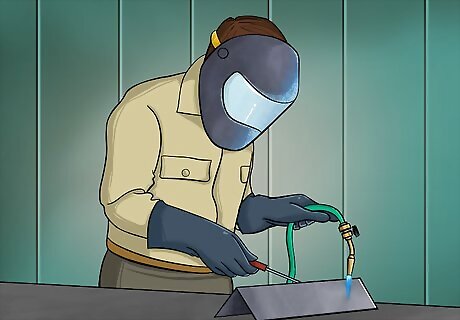
Wear appropriate safety gear. Before using the propane torch, you should put on a pair of heavy work gloves and safety glasses. It is also best to wear long sleeves and pants. Your propane torch should only ever be used in well ventilated areas. Be cautious of wind when using your torch. It can cause the flame to jump and catch unintended things on fire. Never ignite your torch near flammable material. Avoid clothing that is loose or hangs. Loose or hanging clothing is more likely to accidentally catch on fire when operating a torch.
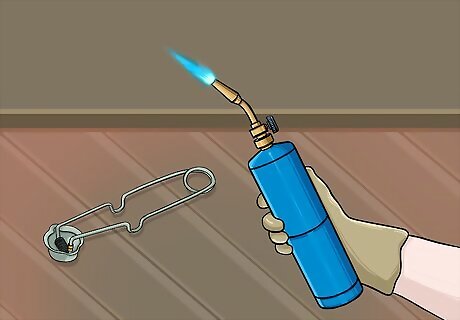
Light the propane torch. Hold the torch with the tip facing away from you and open the gas valve. If you have a striker, place it over the torch nozzle and strike it to ignite the gas. If your torch has an electric igniter, pull the trigger to ignite the gas. This may take several tries. Some propane torches have a safety trigger that must be depressed when lighting the gas. If you are using your torch indoors, make sure to open a window for ventilation. If using one outdoors, be cautious of the wind causing the flame to jump to flammable objects. To safely light a propane torch, check for leaks and ensure proper ventilation before igniting the torch. Then open the gas valve and allow the gas to flow. Ignite the torch with a striker or a spark igniter. Adjust the gas flow using the torch's control valve. Aim for a steady, blue flame with a well-defined inner cone. Hold the torch with a firm grip on the handle. Direct the flame away from your body, flammable materials, or any other hazards in your work area.
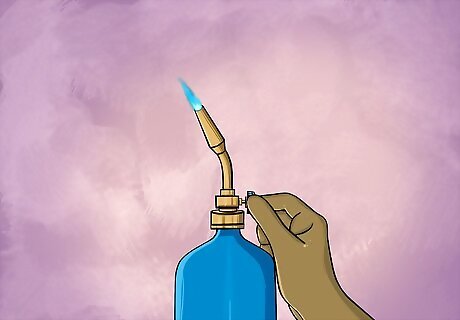
Adjust the height of the flame. Once the propane torch is lit, you can adjust the height of the flame by turning the gas valve. For soldering or other high heat applications, a small flame is best. A larger flame works better for low heat applications. The flame will have a bright inner cone and a more diffuse outer cone. The hottest point of the flame is the very tip of the inner cone.
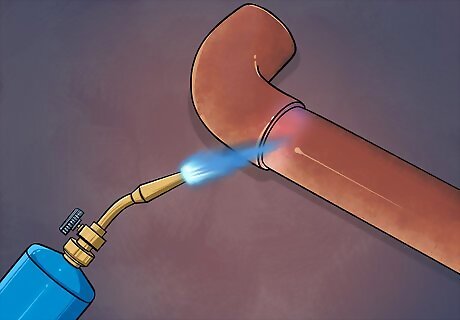
Place the flame against the material you need to heat. For soldering pipe, place the tip of the inner cone against the joint and hold the torch steady. For loosening rusty bolts, try to focus the flame on the nut only or the surrounding metal. For low heat applications, hold the flame further away from the material and keep the torch in motion. Applying your torch to metal will cause the metal to expand. When loosening bolts, it may be best to heat the surrounding metal to prevent the bolt from expanding.
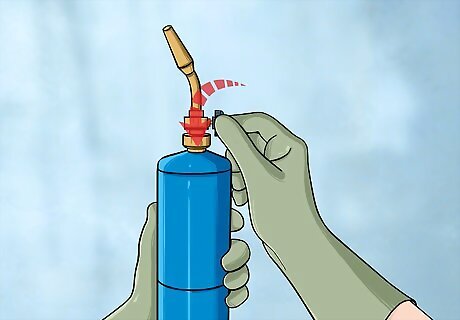
Turn off the gas when you are done using the torch. After use, rotate the gas valve until it closes completely. Allow the propane torch to cool down and then store it in a dry location. Listen for running gas to ensure safety. Separate your torch from the fuel cylinder when you finish using it. This will provide less opportunity for accidents. If you hear leaking gas, check the valve and make sure it is completely closed. If you still hear gas, check for leaks in the fashion explained in the section on troubleshooting your torch.
Soldering Copper Pipe
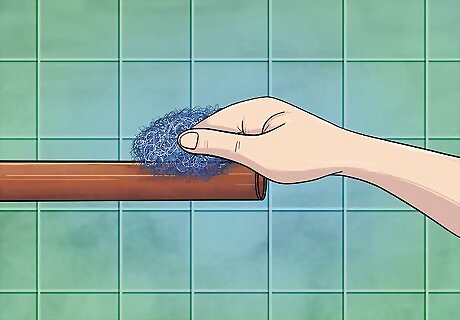
File rough edges on your pipe if necessary. Use a metal file to take off burrs, rough edges, and loose shavings on your pipe. This is especially important if you have cut the pipe to fit a plumbing project. When the jagged edges of your pipe have been filed down, wipe away any remaining fragments with a clean rag. If you don't have a proper file, substitute fine grain sandpaper, emery cloth, or steel wool to smooth rough edges on your pipe. If your pipe didn't cut cleanly and has jagged edges or burrs, wear work gloves when filing to prevent cuts and slivers.
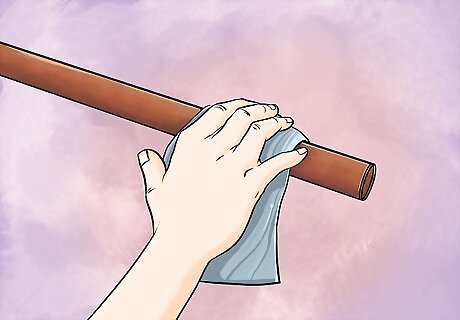
Dry the pipe. In most cases, you can do this by tipping the pipe upside down to force the water out one end of the pipe. If this is impossible, use a dry, clean cloth to absorb all water or liquid near where you'll be applying the solder. Water can interfere with the soldering process and create a weak bond in it. Be thorough when drying your pipe.
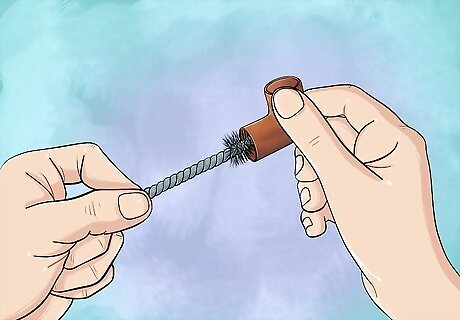
Shine the pipe. A shiny pipe will solder more easily than ones that are not. Use a wire brush on the part of your pipe you will be soldering. Brush the pipe until it shines brightly, and do the same to the joint you will be soldering. Use a clean rag on your pipe after shining it to wipe away any dirt or particles that have been loosened when shining.
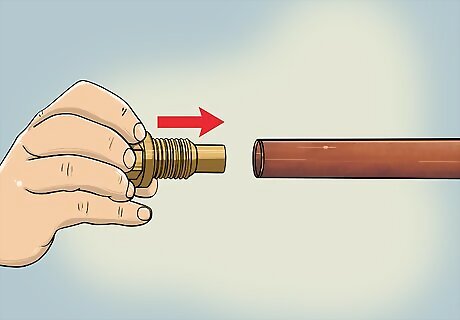
Prevent the flow of water in your pipe. Insert a drain plug, available at your local hardware store, into the pipe to prevent the flow of water. Water can remain in the line if the pipe is still attached and run to where you are soldering, negatively impacting the bond. Generally, pipe plugs come with an applicator. Use this applicator to push the plug up the pipe. Dissolve the plug when you are done by briefly applying the torch to the area the plug is.
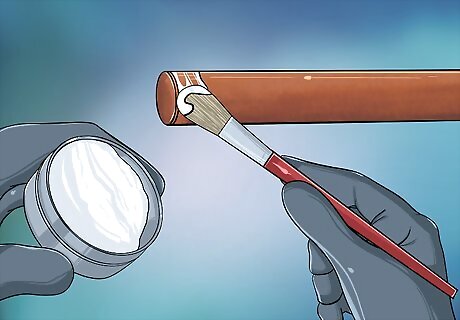
Apply flux to your pipe where you will solder. Be sure you're wearing gloves and goggles when doing this. Flux that has not been treated with heat can be harmful in your eyes, mouth, or open cuts. Use the applicator that came with your flux to apply a thin layer of it to the outer surface of the pipe you'll be soldering. If this is your first time soldering pipe, you may apply to much flux initially. Wipe away excess flux with a clean cloth.
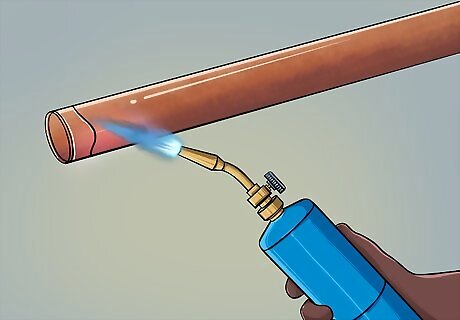
Heat the flux. Light your torch and hold it 2 in (5.1 cm) from the part of the pipe with flux on it. Pass it back and forth over this area for about 10 to 20 seconds. First the flux will become shiny, but then the pipe should darken. When the flux sizzles and smokes slightly, the pipe is ready for solder. Be cautious when handling heated pipe. Touching this could result in accidental burn in the same way touching the flame of your torch would. Keep the flame of your torch set to a moderate or low setting when heating flux. You only need a relatively low temperature to melt it.
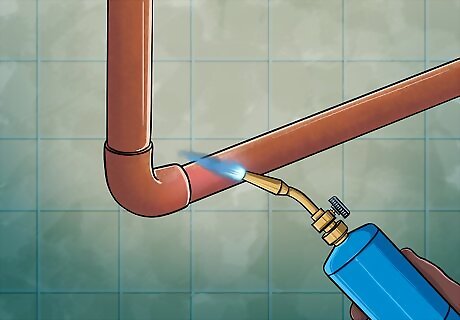
Assemble the pipe components and heat them. Use caution when assembling pipe components so as to not burn yourself on the heated part. Slide the pipe into the fitting until it can go no further. Twist the pipe back and forth in the fitting to spread the flux on the inside of the joint. Then use your torch to reheat the assembled components. Pass the flame of your torch evenly back and forth over the pipe components. Failing to heat these evenly could cause your solder to melt unevenly, allowing water to leak.
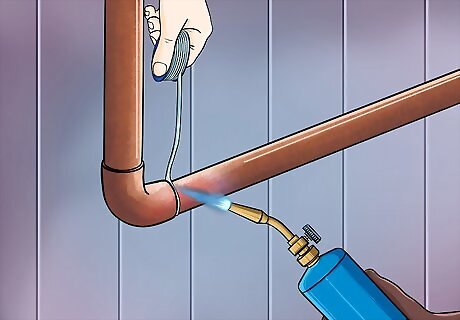
Apply solder to the pipe. Hold your solder to the heated pipe. If the solder runs, your pipe components are sufficiently hot enough to begin soldering. If your components glow or turn a blue color, you've applied too much heat. If you've applied too much heat to your pipe, wait for it to cool completely. When the pipe is cool, try again by repeating this process from the beginning.
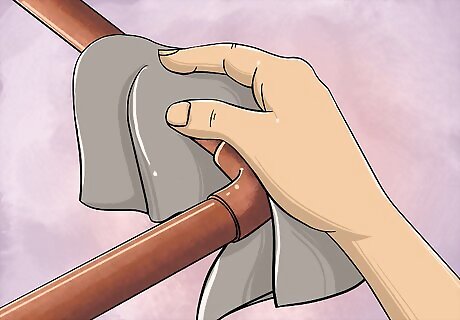
Clean the pipe after soldering. While the pipe is still warm but the solder solid, brush another thin layer of flux on the solder. After that, use a clean cloth to wipe the soldered joint clean. Do not try to cool the joint rapidly. Doing so could cause damage to it. Avoid tightening the fixture or moving the joint around until the solder has completely cooled. The solder will remain soft until it is cool.
Troubleshooting Your Torch
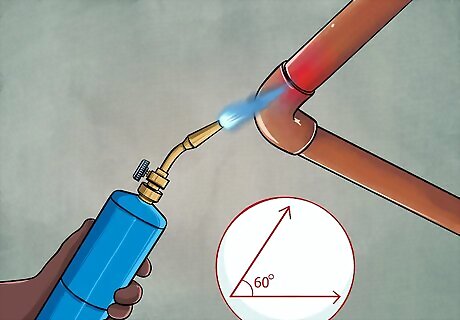
Avoid tipping the torch more than 60° from upright. Tipping your torch in this fashion can cause the torch to flare. This can be especially dangerous on windy days. The wind could cause the flame to jump to the surrounding area and start a fire.
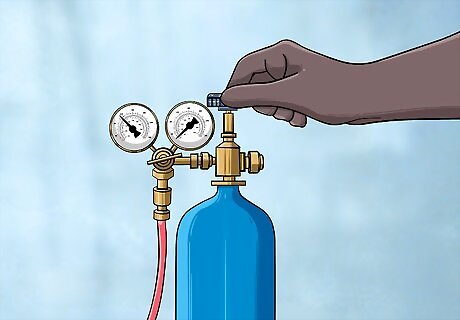
Recognize the effect of temperature on your torch flame. If you use your torch in cold weather and if your torch is not pressure regulated, you may notice that the flame is smaller than usual. Cold temperatures reduce the amount of pressure in the tank, resulting in a smaller flame. Keep your tank in a warm, indoor area and use it quickly and efficiently when out in the cold to maintain a suitable flame. Using a pressure regulated torch will also prevent a small flame due to temperature.
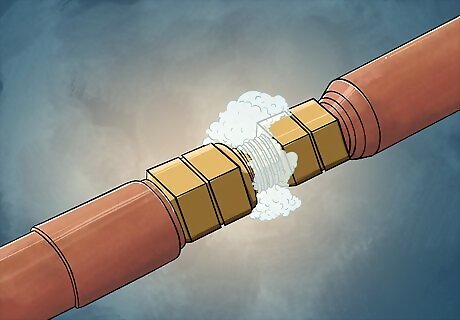
Check your torch for leaks. If you hear a hissing noise of gas escaping your torch even while the valve is off, it likely has a leak. You may also notice that your torch is losing fuel even when not in use, which is another sign of a leak. In a well ventilated, spark free area where there are no open flames, open the valve of your torch but do not ignite it. Use dish soap and water on all connections. If you see bubbles form, you have a leak.
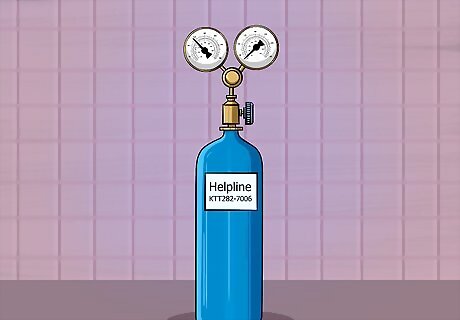
Send in your torch for repairs. Many torches are designed to absorb drop impact so as to prevent damage to the pressurized fuel cylinder. This can sometimes result in your torch breaking off at the airholes when dropped, or another component being damaged. A damaged torch can be severely dangerous; send your torch into the manufacturer for repairs. The customer service number for your torch can often be found in the user manual or on the manufacturer's website. Customer service should be able to inform you of the proper process for repair.


















Comments
0 comment